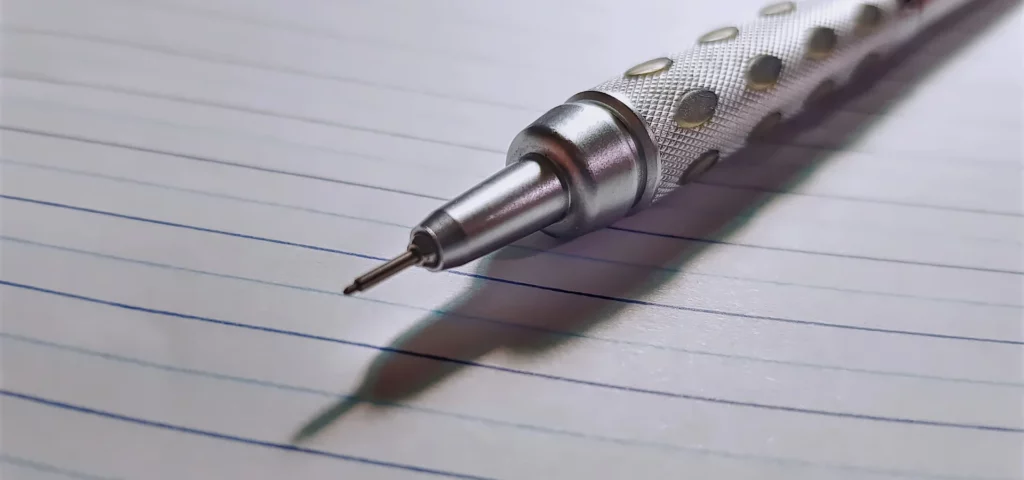Mechanical Pencils Explained
Introduction to Mechanical Pencils
Mechanical pencils, the artisan’s secret weapon, are much more than just fancy pens devoid of ink. They’re precise, efficient, and perfect for anyone who prefers their lines crisp and their lead break-free. Unlike traditional wooden pencils, mechanical pencils hold the promise of never needing to be sharpened—because let’s face it, sharpening pencils is so last century.
For the creative artist on the hunt for top-rated mechanical pencils, it’s like finding the Excalibur of drawing tools. Imagine a pencil that stays sharp until you decide otherwise, and offers a continuous, uninterrupted creative flow. It’s no wonder mechanical pencils are the go-to tool for many artists, designers, and sketch enthusiasts.
Benefits of Using Mechanical Pencils
Mechanical pencils come with an array of benefits that make them indispensable for artists who crave precision and consistency. Here’s why mechanical pencils are a cut above the rest:
- Precision and Consistency: Mechanical pencils provide a consistent line width, which is crucial for detailed sketches and technical drawings. No more worrying about your pencil becoming dull in the middle of a masterpiece.
- Adaptable and Versatile: These pencils can switch lead grades by simply swapping out the lead. One moment you can have a hard lead for detailed work; the next, a softer lead for shading. How’s that for versatility?
- Durability: High-quality mechanical pencils boast long-lasting components. Unlike their wooden counterparts, they don’t shrink down to an unusable nubbin, saving you from repetitive trips to the stationery store.
- Convenience: With mechanical pencils, there’s no need for a sharpener. Just click and go. This saves time and keeps your creative flow uninterrupted.
- Eco-friendly: By using refillable leads, mechanical pencils contribute to reducing waste. Plastic-bodied pencils and their lead refills generate much less waste compared to disposable wooden pencils.
| Benefit | Description |
|---|---|
| Precision and Consistency | Provides a consistent line width ideal for detailed work. |
| Adaptable and Versatile | Easily switch lead grades for different drawing techniques. |
| Durability | Long-lasting components ensure the pencil doesn’t shrink to a tiny nub. |
| Convenience | No need for sharpening, saving time and maintaining creative flow. |
| Eco-friendly | Refillable leads help reduce waste compared to disposable wooden pencils. |
Mechanical pencils aren’t just tools; they’re companions in your creative journey, combining practicality with precision. As the pencil industry evolves, especially in places like India, so too do the options and technologies available to artists, making today’s mechanical pencils not just functional, but phenomenal.
Top-Rated Mechanical Pencils
For artists seeking the crème de la crème of mechanical pencils, the choices are aplenty. Let’s dive into some top-rated options that can transform your sketching and drawing experience into pure bliss.

Tombow MONO Graph Mechanical Pencil
The Tombow MONO Graph Mechanical Pencil is a favourite amongst artists for its precision and design. Known for its strong, break-resistant lead, it ensures consistent and smooth drawing.
- Key Features:
- Built-in lead rotation mechanism
- Rubber grip for comfort
- Available in various colours
- Quick and easy lead advancement
Imagine sketching with a pencil that feels as lavish and sophisticated as high tea with the Queen but without the teapot.
Isomars Drafting Pencils
The Isomars Mechanical Drafting Pencils are available in various sizes, from 0.3mm to the chunky 2mm, offering different line widths for various styles. The 0.5mm variant features a fine plastic body and a threaded grip, making it ideal for both technical work and detailed artistry.
| Feature | Specification |
|---|---|
| Body Material | Fine Plastic |
| Clip Material | Metal |
| Grip Type | Threaded |
| Lead Size | 0.3mm, 0.5mm, 0.7mm, 2mm |
| Lead Type | 2B |
| Refill Case Leads | Ten 0.5mm leads |
Artists can load lead into the Isomars Mechanical Drafting Pencil by removing the push-button cap, inserting a new lead, and clicking to advance it. With its well-balanced build, users can create smooth, consistent lines for various artistic and technical tasks.
Cretacolor Blister Lead Holders
The Cretacolor Blister Lead Holder and Leads Set caters to artists who enjoy versatility and range in their sketches. The set includes six distinctive leads, characterized by their rich pigmentation and smooth stroke.
- Included Leads:
- Graphite 4B
- White Pastel
- Sanguine Oil
- Sepia Light
- Sepia Dark
- Charcoal
Each lead measures 120mm in length and 5.6mm in diameter, providing a substantial tool for expressive rendering. Whether working with dry chalk or oil-based leads, artists can mix, smudge, and layer for varied effects. Consider it a smorgasbord of creative potential in your pencil case.
For broader artistic endeavours, these mechanical pencils can be complemented with additional artistic tools and capabilities to reach the pinnacle of creative precision.
Mechanical Pencil Selection Guide
Selecting the perfect mechanical pencil is essential for any creative artist. In this guide, we’ll help you navigate the myriad of options, from lead sizes to additional features that can elevate your drawing experience.
Choosing the Right Lead Size

Mechanical pencils often come with a single lead diameter, making the choice an important one. Common sizes include 0.5 mm and 0.7 mm, but options range from a delicate 0.2 mm to a chunky 5.6 mm (Wikipedia). So, how does one choose?
- 0.2 mm to 0.3 mm: Ideal for fine detail work and precision drawing. Great for those with steady hands or a penchant for miniatures.
- 0.5 mm: The all-rounder. Perfect for most drawing and sketching needs, offering a balance between detail and durability.
- 0.7 mm to 0.9 mm: Excellent for bolder lines and shading. Suitable for those who prefer a robust line that doesn’t break easily.
- 2.0 mm to 5.6 mm: Favoured by artists for sketching and shading large areas. These are versatile and can be tapered to a fine point with a sharpener.
| Lead Size (mm) | Ideal Use Case |
|---|---|
| 0.2 mm | Fine Detail, Precision Work |
| 0.5 mm | General Drawing, Sketching |
| 0.7 mm | Bold Lines, Durable Writing |
| 2.0 – 5.6 mm | Shading, Large Sketches |
Features to Consider
Mechanical pencils come packed with features designed to make your drawing experience as pleasant as a Sunday afternoon nap. Here are some key aspects to look out for:
- Grip: A comfortable grip can make all the difference in long drawing sessions. Look for padded or ergonomic designs that reduce strain.
- Weight & Balance: A well-balanced pencil feels like an extension of your hand. Test different weights to see what suits you best.
- Lead Advancement Mechanism: Options include push-button, twist-feed, and even shake mechanics. Choose what feels most intuitive.
- Eraser: Built-in erasers are handy, but removable erasers often last longer and can be replaced.
- Material: From plastic to metal, the choice of material affects the pencil’s durability and weight.
- Extra Features: Some pencils come with handy extras like lead hardness indicators, retractable tips, and even auto-rotation mechanisms for consistent line width.
By considering these factors, an artist can enhance their mastery over mechanical pencil drawing, ensuring that every line drawn brings pleasure and precision.
The Art of Mechanical Pencil Drawing
Embarking on the journey of mechanical pencil drawing? This segment is just what you need! From perfecting your techniques to ensuring your trusty tool lasts, here’s your guide to drawing bliss.
Techniques and Tips
Drawing with mechanical pencils opens a world of precision and adaptability. Whether he’s a seasoned artist or she’s just beginning, these techniques can help elevate any sketch.
- Varying Line Widths: Use different lead sizes to add depth and dimension. Swap between 0.5 mm for fine details and 2.0 mm for bold strokes (New York Times Wirecutter).
- Mastering Shading: Hard leads (like 4H) offer light and delicate lines perfect for shading, while soft leads (like 4B) provide dark and bold strokes for contrast (Wikipedia).
- The Uni Kuru Toga Rotation Mechanism: This nifty invention keeps the lead sharp and precise by rotating it as you draw. It’s like having a tiny assistant ensuring consistent lines, although it might jam occasionally (USA Today).
- Cross-Hatching: Use intersecting sets of parallel lines to create texture and shadow. Adjusting the spacing and direction of these lines can produce varying levels of shading.
- Layering: Build layers gradually. Start light and slowly darken areas as needed. This method helps in achieving a smoother blend of shades and tones.
Maintenance and Care
Keeping a mechanical pencil in top condition ensures consistent performance and longevity. Here are some care tips to show your pencil some love:
- Regular Cleaning: Over time, pencil dust and fragments can jam the mechanism. Disassemble the pencil periodically and clean out any debris with a small brush or canned air.
- Proper Storage: Store your mechanical pencils in a sturdy case to prevent the leads from breaking and the mechanism from being damaged.
- Lead Refills: Always have a variety of lead hardness refills on hand. Brands like Isomars and Cretacolor offer an array of options from standard 0.5 mm to the more substantial 2.0 mm (My Art Shop).
- Check Lead Grades: Ensure you’re aware of what lead grade is inside. Mixing different grades can cause inconsistent line quality and potential jamming.
- Lubrication: Lightly lubricate the moving parts if the mechanism feels stiff. Avoid over-lubricating, which can attract more dust and grime.
By mastering these techniques and taking good care of their tools, creative artists can truly make the most of their top-rated mechanical pencils.

